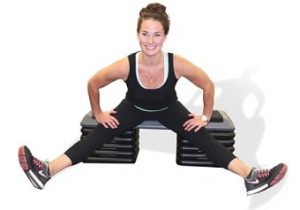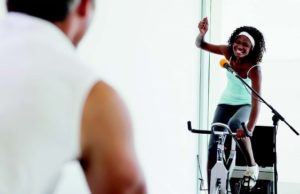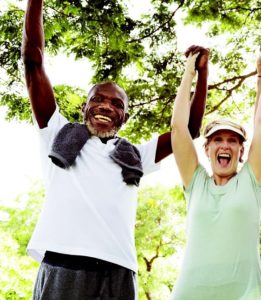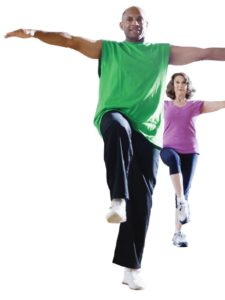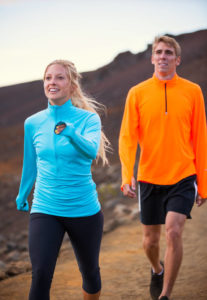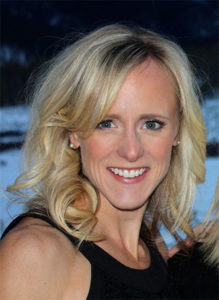Consumer EducationShare With Clients
To Help Clients Succeed, Keep Change Simple
Samuel L. Berry, MS, is a Master Trainer for the American Council on Exercise and for Functional Movement Systems. He serves a wide range of clients and athletes aged 11—81 who are working toward a variety of objectives. In addition to his roles as a trainer and educator, he has contributed to publications for Harvard Medical School, Encyclopedia of Sports Medicine, PTontheNet.com and prominent peer–reviewed publications such as The Journal of Pediatrics.
Flexibility Plus
Stretching has become a controversial topic, and some research questions its efficacy. You may have wondered whether you should include stretches in your cooldowns. As a general rule of thumb, if it's weak, strengthen it; if it's sore, rub it; if it's locked, unlock it; and if it's tight, stretch it. This works in theory, but we don't know exactly what's going on with our participants' bodies. What we do know is that most people want to move more freely and with less pain.
The Group Fitness Trifecta
Measure your progress with a three-pronged approach to metrics.
Aging and Cardiovascular Disease: Exercise to the Rescue!
Our species is long–lived compared with other primates. Chimpanzees, for instance, have a life expectancy of about 13 years versus 78.5 years for U.S. babies born in 2009 (Pringle 2013). Why such a big gap? Pringle says vaccines, antibiotics, sanitation, and access to nutritious vegetables and fruits year round give us a huge edge over our great–ape cousins, as does our acquired ability to fight off pathogens and irritants in our environments.
5 Reasons to Ditch the Diet Mentality
Research suggests intuitive eating may be a promising way to maintain a normal body weight and a healthy relationship with food.
6 Ways to Help Clients Rediscover the Joy in Exercise
Getting people to move more begins with shifting the fitness conversation from tomorrow’s gains to today’s joy, experts say.
Researchers Question Effectiveness of Wearable Activity Trackers
The wearable activity market has seen significant growth in recent years, and the trend seems poised to continue. However, new information from Duke-NUS Medical School in Singapore suggests many buyers may not get their money’s worth—at least as far as health improvements are concerned.
Why Those With Type 2 Diabetes Should Walk After Dinner
Reducing blood sugar levels is one step in managing type 2 diabetes, and some experts say walking regularly can help. A new study suggests that when walking takes place may make a difference.
Researchers Warn Seniors: Avoid High-Intensity Exercise
High-intensity exercise is all the rage these days. But for some—particularly, older adults—too much intensity may do more harm than good, warns a new study.
The study’s primary purpose was to understand the effects of various forms of leisure-time physical activity on the cardiovascular health and mortality rates of older adults. To determine these effects, researchers studied the records of 3,298 individuals. Their average age at enrollment was 69, and the median follow-up period was 17 years.
Improving Health Behaviors
Laura DeFina, MD, FACP, is president and CEO of The Cooper Institute®, as well as its chief science officer. After practicing general internal medicine and geriatrics, she joined The Cooper Institute in 2009 to pursue her interests in prevention and research related to healthy aging. Since then, she has authored manuscripts on, among other topics, brain health, healthy aging, depression, cardiorespiratory fitness and injury in physically active women.
Dieting Is Fraught With Failure
Great article by Len Kravitz, PhD: "Dieting Makes You Fat! How?" [Research, September]. At Personally Fit, most clients come to us to lose weight. We explain the difference between weight loss and fat loss, and we prioritize strength training. The loss on the scale is not as drastic, but the inches lost and the improved body composition that many of our clients experience are outstanding.
Power Up to Prevent Injury
Participants rarely think about injuries until after they happen (hopefully not in your class!). But someone who needs rehabilitation may face a delay in meeting fitness goals. Another issue: Our group fitness studios are filling with people of many different ages and abilities.
Crystal-Clear Cuing for Indoor Cycling
Walk by any indoor cycling studio when a class is in session and you're likely to hear a variation of the following:
"I want everyone at a 2!"
"Push yourself to a 7 and hold it there for 30 seconds!"
"Let's start at a 3, turn up to 6, and then come back to a steady 4. Go!"
The key to unlocking a fantastic cycling class is somewhere in those numbers, but your members may find themselves shut out if they don't know what you're referring to.
Behavior Modification Strategies
Behavior modification can be a tricky thing when it’s just you and your client working through challenging issues. But what happens when others are proving to be obstacles to progress? IDEA asked a handful of fitness professionals how they assist or advise clients whose friends and family may be sabotaging their efforts to get healthy.
I often ask clients about their social habits and suggest, for example, that "girls' night out" could be replaced by a fun activity that does not revolve around eating. Discussing strategies with clients in preparation for events like that is often helpful.
How to Fortify Your Purpose and Bolster Your Business
It was 2014 and Jill McKay was at a critical juncture. For the past decade, she had thought of herself as "just a mom," yet recently the idea of founding a fitness organization had begun to consume her. The problem? McKay lacked both confidence and the know-how to get started. Soon, however, she'd find her first step—and the catalyst to fulfilling her aspirations—underneath the Christmas tree.
Skeletal Muscle Hypertrophy
Clients who want more muscularity need to face one of the most fundamental facts of skeletal muscle hypertrophy: Training to failure is crucial to building bigger muscles. Two original research studies reinforce this reality while offering meaningful new insights into hypertrophy training.
Menopause Symptoms: Can Yoga Help?
"Joanne," aged 51, presents with hot flashes and vaginal atrophy. She feels depressed, anxious, irritable, fatigued and not as confident in herself as she once was. Somehow she feels out of control. Her body is behaving unpredictably: She doesn't know when her next hot flash is coming or how to control the fat that is shifting up toward her waist.
Can We Get All of Our Nutrients From Food?
You’ve probably come across this argument from nutrition gurus: Modern diets just don’t have enough of the nutrients we need from food.
A 9-Step Plan for Starting a Walking Program
Why it’s a great idea to start a walking program in your community, and how you can get moving on it.
A Simple, Attainable Action Plan
Jinger S. Gottschall, PhD, earned her doctoral degree in integrative physiology from the University of Colorado, Boulder, and furthered her academic career as a postdoctoral fellow in neurophysiology at the Emory University School of Medicine. She is currently an associate professor at Pennsylvania State University, University Park, with a research focus on the effectiveness of various exercise regimes.

